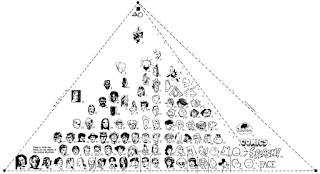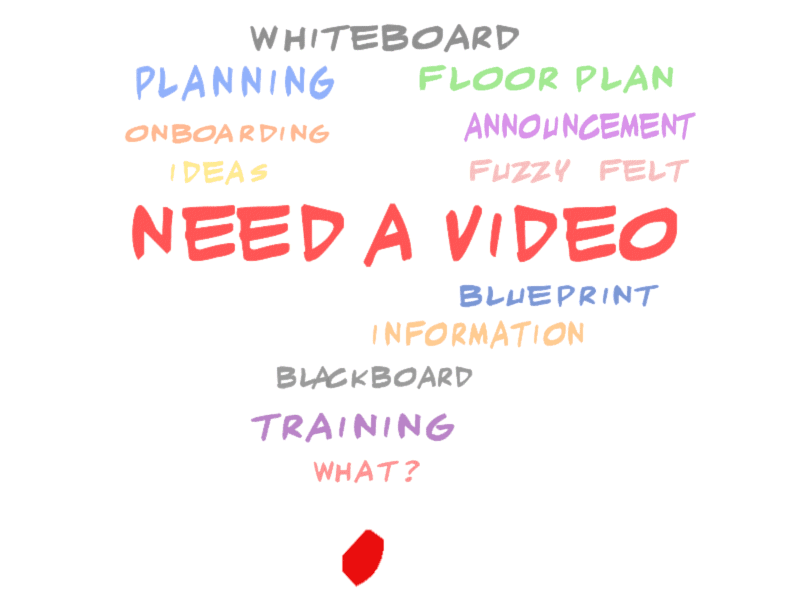Draw It Like This...
Animation can take a lot of forms. The computer and the artistic mind work together to create all kinds of possibilities that weren't available decades ago. Often, clients come to Novamation MEDIA knowing exactly what they want their animation to do, but they aren't quite sure how they want their animation to look. Our animation projected time and cost is often calculated based on the complexity of the design. At Novamation MEDIA, complexity is measured by Detail and Realism. We can see a comparison of detail and realism by looking at a single object represented in different ways, like this plant.
To the extreme left is a photo of a plant. It has a high level of realism because it is real. It is a literal representation of a plant with nothing left to the imagination, and this also gives it a high level of detail. The flecks in the soil and veins in the leaves have areas where the light illuminates and shades them. It looks like a plant because it is a plant. Next to it is a computer generated 3D model plant. It has full shading, shadow and texture. It looks like a plant because it has everything that the photo has including light and shade.
The more detail we take out of the representation, the more your brain needs to fill in the blanks. The demonstration drawing of a plant doesn't have as much detail or realism as the 3D model, but you can still tell its a plant. The image on the extreme right is an abstract drawing of a plant. The "S" shaped green line looks like a stalk, and the two marks on the top look like leaves. Your brain has to tell you this is a plant, but it is abstract or stylized with little detail or realism. Your brain tells you it's a plant, but you would never think it's a REAL plant.
In this example, we increase and decrease detail and realism at the same time, but the truth is, you can separate detail and realism so that you can increase one without increasing the other. In fact, you can even move them in opposite directions. At Novamation MEDIA, we take detail and realism and place them on a grid that we call the McCloud rating system. We use this to rate the complexity of the animation we are creating, and even use it to help calculate our project bidding.
Why "McCloud"
We call our rating system "McCloud" because it is based loosely on something called the picture plane, created by author Scott McCloud. On McCloud's picture plane, Realism and detail are at their highest in the bottom right corner. As you move to the right, detail drops. As you move up, realism drops. At the very top, images become so abstract that your brain can't tell what they represent. At the far right, images aren't even images anymore, and words need to be used. |
| Artist - Verica Hupe |
Joyce is not quite human. She has the same body dimensions of a real human, and she has individual hairs, but her flat skin tone and simple eyes make her less realistic, so she has less detail than a Daz Character.
Cartoon representations of people, or realistic representations of toys. This image is both. The detail of the people was reduced to create these caricature toys. Then the toys were rendered with a high quality. The people were made abstract, but the toys have the highest level of detail.
Hipster Joe has no features at all, he looks hand drawn but you can clearly see that he is a man with a beard holding a cup of coffee. He looks hand-drawn, but he is Two and a Half D just like Noah, and bears the same detail number, even though he is the next level of abstraction from Noah. Characters at this level of abstraction are used mostly for presentations and infographics. They usually suggest a person type instead of an individual.
Steve is an IPM professional using a drone to perform a building inspection. He is featureless, like Hipster Joe, but he has far more shading and detail, Steve is full 3D so he is both detailed and abstract. Steve was designed for a training animation. Like Joe, who is a hipster, Steve represents an archetype rather than an actual character.
This is a jumble of geometric shapes, that your brain tells you is a little girl. She's about as abstract as you can get a group of shapes and still have the audience see anything like a character. Cartoon shaded like Hipster Joe and Noah, but far more abstract than either of them, this is more an icon than an actual character. She was created to represent a statistic in an animated infographic.
That's not to say that something abstract can't have a high level of realism. This is the same stylized little girl, but she is texturized and shaded with shadows and reflections. She still looks abstract, but now your brain tells you that she's a sculpture. This character icon has a high level of abstraction, and high detail.
















No comments:
Post a Comment